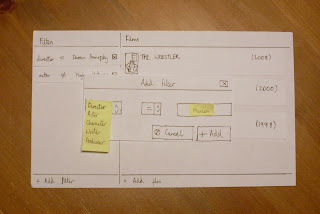Video-tagging Database
With the recent advent of ultra-mobile personal computers, or netbooks, combined with the ever-increasing storage space available, users are storing larger and larger collections of video on portable devices. They want choice access at a time convenient to them without having to carry cumbersome amounts of storage media. This system will gather information about the user's film collection from IMDb (the Internet Movie Database) and add tags (pieces of data linked to a role, e.g. 'director = Robin Hardy', 'actor = Christopher Lee') to a database . The user can then specify criteria to filter the database.
For example, the user could specify the criteria that:
a) the director is 'Darren Aronofsky';
b) the actor 'Sean Gullette' is in the film;
but that c) the actor 'Hugh Jackman' is not in the film.
and the system would return results from the user's film collection.
The system should also allow the user to display information on and play videos.
Usability of the filter feature
Since this is a complex feature, the prototype and subsequent user-evaluation will focus solely on the interface for specifying filter-criteria and returning results.
The evaluation will be performed using the think-aloud protocol with a post-evaluation questionnaire.
Tasks for the user to perform
For the evaluation, the user will be told that they want to watch a particular film, but they have forgotten the name. They know that the film is directed by Darren Aronofsky, that the actor 'Hugh Jackman' isn't in it -- that was The Fountain -- and that one of the main characters is called 'Marion'.
The users will be asked to think aloud. They will then be presented with a paper representation of the screen and told to find out the name of the film.
Prototype
Questionnaire
The questionnaire has been designed to reduce bias. It aims achieves this by repeating and rewording the same question with the scale of answers switched (e.g., 5 = Agree, 1 = Disagree would be come 1 = Agree, 5 = Disagree). It is viewable online here.
Tuesday 24 February 2009
Subscribe to:
Posts (Atom)



